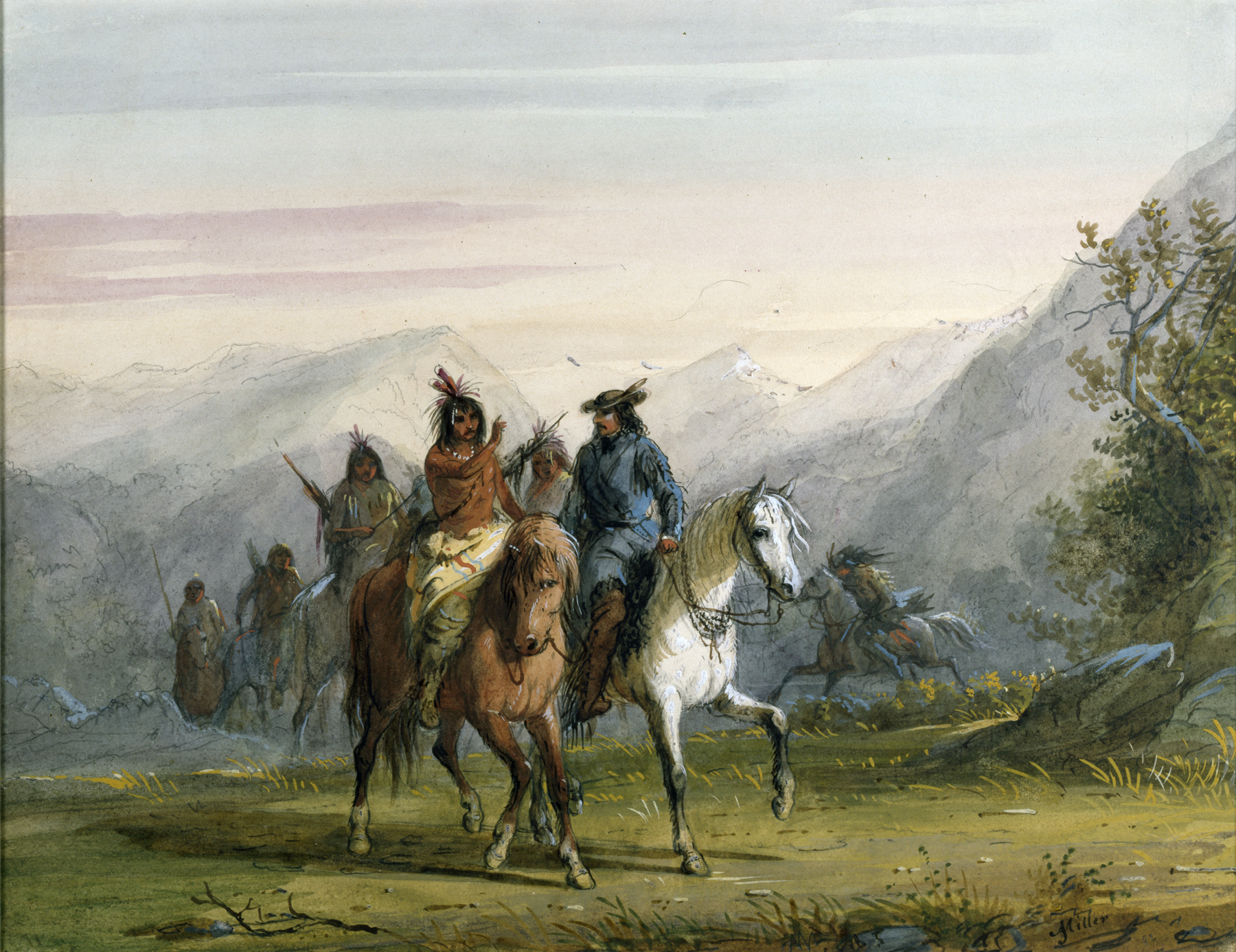Conversing by Signs
(18th and 19th Centuries )
Extracts from Alfred Jacob Miller’s original text, which accompanied his images of Native Americans, are included below for reference. These words, which shaped how Miller’s contemporaries viewed the watercolors, reveal the racism and sexism embedded in 19th-century exploration and colonization of the western part of what is today the United States.
"In one of our hunting excursions, we encountered a small party of Indians, our interpreter was not present, and it was desirable to have some information that we stood in need of. The sketch represents the Indian communicating this by signs, which he does by graceful action and significant gesture, so that in the main, it is readily comprehended by persons, of course having some practice and experience. Some of the signs are easily interpreted,- for instance,- joining the palms of the hands and throwing them upward and outward, to signify day time,- action reversed, palms downward, night. Time is indicated by pointing directly over-head for meridian, and at any point from East to West, where the sun would probably be at the time,- for that hour. Sleeping is indicated by inclining the head in the palm of the hand, and closing the eyes for a moment &c. One of the cheif difficulties in acquiring the Indian language is the gutteral pronounciation;- without the even, it is not an easy matter." A.J. Miller, extracted from "The West of Alfred Jacob Miller" (1837).
In July 1858 William T. Walters commissioned 200 watercolors at twelve dollars apiece from Baltimore born artist Alfred Jacob Miller. These paintings were each accompanied by a descriptive text, and were delivered in installments over the next twenty-one months and ultimately were bound in three albums. Transcriptions of field-sketches drawn during the 1837 expedition that Miller had undertaken to the annual fur-trader's rendezvous in the Green River Valley (in what is now western Wyoming), these watercolors are a unique record of the closing years of the western fur trade.
Inscription
Provenance
Provenance (from the French provenir, 'to come from/forth') is the chronology of the ownership, custody, or location of a historical object. Learn more about provenance at the Walters.
William T. Walters, Baltimore, 1858-1860, by commission; Henry Walters, Baltimore, 1894, by inheritance; Walters Art Museum, 1931, by bequest.
Geographies
USA (Place of Origin)
Measurements
H: 9 1/4 x W: 11 11/16 in. (23.5 x 29.7 cm)
Credit Line
Commissioned by William T. Walters, 1858-1860
Location in Museum
Not on view
Accession Number
In libraries, galleries, museums, and archives, an accession number is a unique identifier assigned to each object in the collection.
In libraries, galleries, museums, and archives, an accession number is a unique identifier assigned to each object in the collection.
37.1940.102



